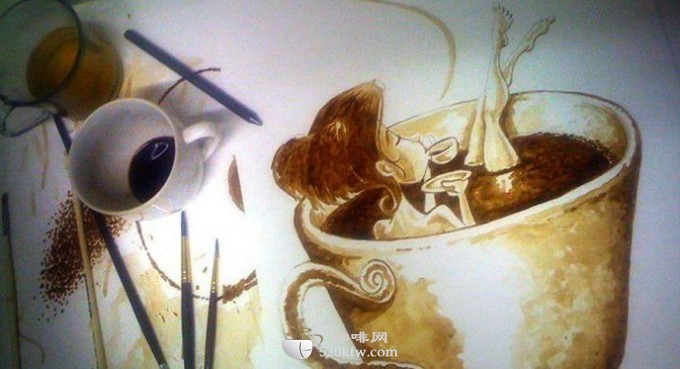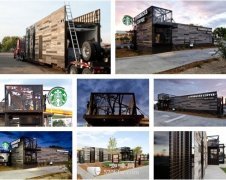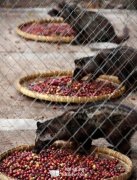How many tricks are hidden in a cup of coffee

In the rules of the World Barista Championships, the traditional cappuccino is defined as "five to six ounces of drinks (Five-to-six-ounce beverage)". In fact, Starbucks 8-ounce cappuccinos are basically made from the same dose of coffee (Espresso) as 12-ounce cappuccinos, which means that "small cups" taste purer and better. If you buy a large cappuccino, pay so much RMB and buy a lot of milk instead of coffee.
If you like a Starbucks cappuccino, you should order a small 8-ounce cup, not a 12-ounce large cup or a 16-ounce oversized cup. Why? Because the difference between a large cappuccino (31 yuan) and a large cappuccino (28 yuan) is 3 yuan, while the small one is only 25 yuan. Here, I would like to reveal to you a little secret about Starbucks.
A Starbucks 8-ounce cup of cappuccino is made with the same amount of coffee (Espresso) as a 12-ounce cup, which means the coffee tastes purer and better. In the rules of the World Barista Championships, the traditional cappuccino is defined as "five to six ounces of drinks (Five-to-six-ouncebeverage)". If you buy a 16-ounce oversized cappuccino and pay an extra 6 yuan for a lot of milk instead of coffee, it certainly doesn't taste so authentic.
If you ask Starbucks why it is doing this? Technically, no matter how skilled a barista is, it is difficult to make a high-quality, large cappuccino milk foam (called "Microfoam" in jargon). As for why it is priced in this way? Economists' answer is: this is a painful choice for Starbucks in a dilemma: prices are too low and profits disappear; prices are too high and customers are lost. But if your goods are too cheap, you may not be able to make money, and a large number of customers who can afford to pay will never lose their price and step into a bargain store. As a result, companies usually do not drive down the price of their products in order to prevent the loss of high-end customers, just as Starbucks makes cheap goods invisible.
But brands like Starbucks have a set of tricks to catch you as their "loyal" customers, and one of their tricks to buy new customers is to send you a free coffee voucher when your birthday is approaching.
It is said that a computer engineer named Logan one day received a birthday gift certificate from Starbucks-a cup of free coffee. Coincidentally, he worked overtime on his birthday and couldn't go home for the birthday party. He was extremely upset, so he wanted to play a little prank. Happy and bright, he thought of the coffee gift certificate.
He went to Starbucks to order a Java ChipFrappuccino and asked for 16 servings of 16shots of espresso, followed by a long list of jams and condiments, including soy milk, caramel, banana jam, strawberry jam, vanilla beans, matcha powder, protein powder and mocha caramel, totaling US $23.60 (including tax). When it was time to pay, he flashed the free voucher, and the barista stared at it. According to the Starbucks catalog, the most expensive coffee was up to $5.25, which was a big loss. And that's what Logan wants to achieve, and he smiles and his heart is in full bloom. He was told it was the most expensive cup of coffee Starbucks had ever had.
In fact, Logan's cup of coffee is far from the most expensive!
At the International Coffee Fair in Poland, the world's most expensive coffee is offered every Friday, with up to $80 for a cup and $700 for a pound of beans. This is Kopi Coffee (Kopi Luwak), or masked palm civet Coffee (Civet Coffee), which is collected from masked palm civet's digestive tract.
However, this is not the most expensive coffee!
There is a kind of Vietnamese weasel coffee (Vietnamese Weasel Coffee), the coffee process is like Kopi coffee, the fruit beavers eat fresh coffee berries, and then pass through the large intestine to form fecal excretion, thoroughly washed by peeling and selection, and then dried by the sun. After gently roasting and brewing, these mellow, bitter and low-caffeinated beans are made, and the yield is extremely limited. It is ridiculously expensive, up to US $3,000 a pound of coffee, and most of its customers are in Asia. They are the favorites of the rich in Japan, Taiwan and South Korea, who "don't ask the best, but only buy the most expensive".
In fact, this method of doing business has existed for hundreds of years. As soon as the railway opened, the French economist Emile Dupuit wrote why third-class cars were not roofed, although it was cheap to build them, but "the company did so to prevent passengers who could afford second-class tickets from buying third-class tickets to travel; it hit the poor, but not to hurt them, but to scare the rich".
Important Notice :
前街咖啡 FrontStreet Coffee has moved to new addredd:
FrontStreet Coffee Address: 315,Donghua East Road,GuangZhou
Tel:020 38364473
- Prev

Starbucks studies leaf rust
Starbucks has bought its first farm in Costa Rica. The farm covers an area of 600 acres and plans to cultivate new varieties of coffee and test the prevention and control of "coffee rust" that afflicts the industry.
- Next

China's Kopi Luwak
Tasting civet coffee in Indonesia is a luxury. Because Indonesians can sell civet coffee at a good price.
Related
- Beginners will see the "Coffee pull flower" guide!
- What is the difference between ice blog purified milk and ordinary milk coffee?
- Why is the Philippines the largest producer of crops in Liberia?
- For coffee extraction, should the fine powder be retained?
- How does extracted espresso fill pressed powder? How much strength does it take to press the powder?
- How to make jasmine cold extract coffee? Is the jasmine + latte good?
- Will this little toy really make the coffee taste better? How does Lily Drip affect coffee extraction?
- Will the action of slapping the filter cup also affect coffee extraction?
- What's the difference between powder-to-water ratio and powder-to-liquid ratio?
- What is the Ethiopian local species? What does it have to do with Heirloom native species?

